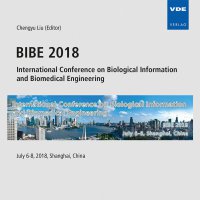Insight into the process of ligand dissociation form β-adrenergic-like octopamine receptor in Schistocerca gregaria using steered molecular dynamics simulation (SMD)
Konferenz: BIBE 2018 - International Conference on Biological Information and Biomedical Engineering
06.06.2018 - 08.06.2018 in Shanghai, China
Tagungsband: BIBE 2018
Seiten: 4Sprache: EnglischTyp: PDF
Persönliche VDE-Mitglieder erhalten auf diesen Artikel 10% Rabatt
Autoren:
Lu, Xiaoli; Rao, Wei; Li, Jingdi; Lu, Huimeng (Institute for Special Environmental Biophysics, Key Laboratory for Space Bioscience and Biotechnology, School of Life Sciences, Northwestern Polytechnical University, Xi’an 710072, Shaanxi, PR China)
Inhalt:
Octopamine and its receptors, are involved in many physiological function of insect, including learning and memory, defence and aggression, development, metabolism, reproduction, sensorimotor and social activities. Therefore, octopamine receptors (OARs) in Schistocerca gregaria, such as β-adrenergic-like octopamine receptor (SgOctbetaR), which is more sensitive to endogenous ligand, thus can be considered as potential insecticide target to control locust. However, the unavailability of SgOctbetaR’s structure and the inadequate understanding of functional mechanism make an obstacle to the development on insecticide design. Thus, in this paper, the steered molecular dynamics simulation (SMD) is employed, not only to predict the complex conformation in membrane-solvent system, but to provide an insight into the process of ligand dissociation form β-adrenergic-like octopamine receptor. In this way, three important characteristics of ligand dissociation process are revealed according to the dynamic process of conformational changes. Firstly, the characterization of SgOctbetaR’s complex conformation is explained, including the involved hydrogen bonds and active sites in SgOctbetaR. Then, the results of characterizations of ligand dissociation channel illuminates that different domains exert the corresponding functions. Finally, the “switch” binding site of SgOctbetaR is identified, which is E171EL2 residue. This work is definitely helpful for understanding the functional mechanism of SgOctbetaR and furtherly designing the efficient insecticides based on the dynamic simulated structure.


